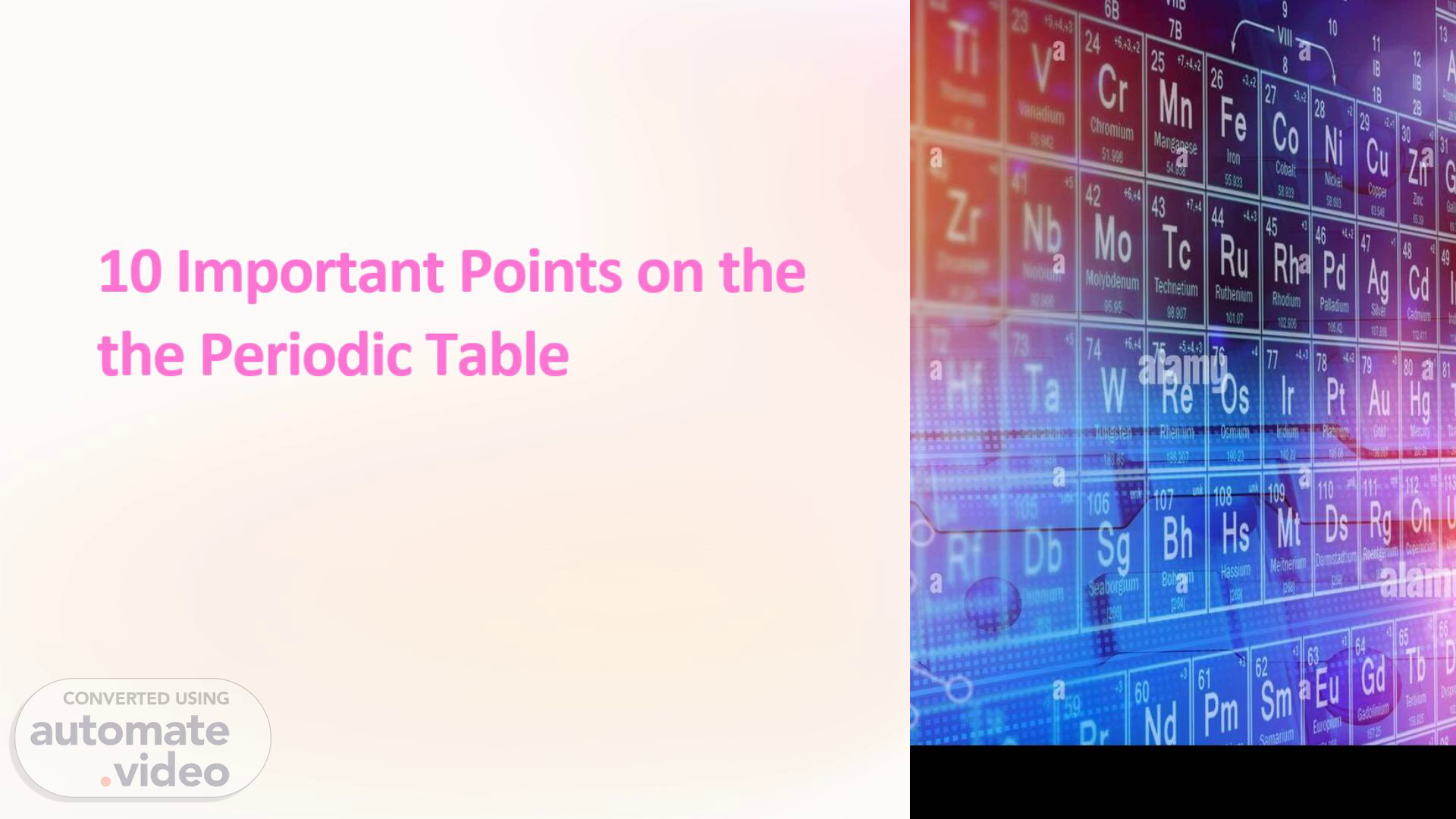
PptxGenJS Presentation
Scene 1 (0s)
[Audio] 10 Important Points on the Periodic Table Welcome to this engaging presentation on the Periodic Table. Let's explore the history, structure, and key elements that make up this fundamental concept in chemistry. by debraj dey.
Scene 2 (17s)
[Audio] Introduction to the Periodic Table The Periodic Table is a tabular arrangement of chemical elements, ordered by their atomic number and recurring chemical properties. It provides a framework for understanding the properties and behavior of atoms and molecules..
Scene 3 (35s)
[Audio] History of the Periodic Table The journey of the Periodic Table began in the 19th century with the contributions of scientists such as Dmitri Mendeleev and Julius Lothar Meyer. Their efforts led to the classification and organization of elements based on their properties..
Scene 4 (54s)
[Audio] The Structure of the Periodic Table The Periodic Table is structured in rows called periods and columns called groups. The arrangement allows elements with similar properties to be grouped together, revealing patterns and trends in their behavior..
Scene 5 (1m 11s)
[Audio] Elements, Atoms, and Molecules Elements are pure substances composed of atoms, the basic building blocks of matter. Atoms can combine to form molecules, which are the smallest units of compounds. The Periodic Table showcases the wide variety of elements and their atomic structures..
Scene 6 (1m 33s)
[Audio] Atomic Number, Symbol and Name of Elements Each element in the Periodic Table is assigned an atomic number, symbol, and name. The atomic number represents the number of protons in an atom's nucleus, while the symbol provides a shorthand representation of the element's name..
Scene 7 (1m 52s)
[Audio] Groups and Periods The Periodic Table is divided into groups and periods. Groups, also known as families, are vertical columns that share similar properties. Periods, on the other hand, are horizontal rows that represent the addition of new electron shells..
Scene 8 (2m 12s)
[Audio] Chemical Properties of Elements Elements possess unique chemical properties, such as their reactivity, electronegativity, and ability to bond with other elements. While most elements follow predictable patterns, there are exceptions that defy expectations and provide fascinating insights into the world of chemistry..